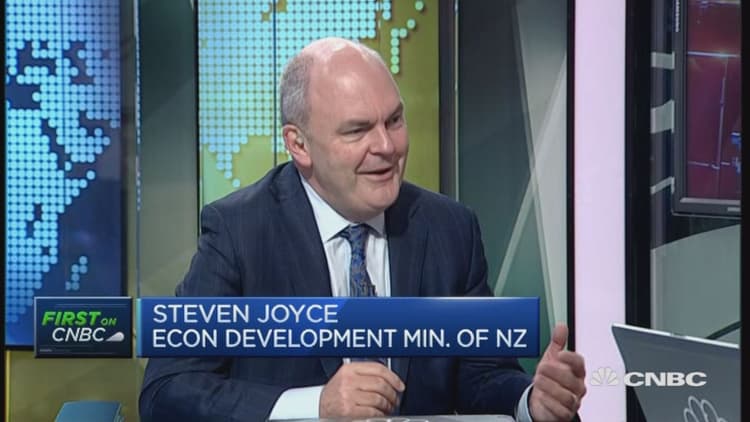In early 2014, the Reserve Bank of New Zealand (RBNZ) became the first major central bank to hike interest rates since the European debt crisis. Two years later, policymakers are in a sustained easing cycle.
A surging currency and a fiery housing market are weighing on the RBNZ as it debates just how much stimulus to unveil at Thursday's meeting.
The key question isn't whether the RBNZ is going to cut, but whether their stimulus will be enough to assuage concerns about the persistent softness in inflation, according to economists at Westpac Bank.
Three weeks ago, the central bank held a special economic assessment update in which it said "further policy easing will be required" for consumer price inflation (CPI) to hit its 1-3 percent target range. An appreciating currency has hindered price increases, with the around 6 percent higher than the central bank's expectations, Westpac noted.
Year-to-date, the kiwi is more than 5 percent higher against the greenback while CPI has been unchanged at 0.4 percent on-year since January. In fact, annual CPI readings have registered gains of fewer than 1 percent since the December 2014 quarter.
So, what's stopping the RBNZ from throwing the kitchen sink at markets on Thursday?
"The strong housing market is one of the main factors preventing a more aggressive move from the RBNZ," explained Kathy Lien, managing director of FX strategy at BK Asset Management.
Like Australia, New Zealand's residential property market has been on a tear. The national median house price breached the NZD$500,000 ($360,000) barrier, an 11.1 percent annual increase, the Real Estate Institute of New Zealand (REINZ) revealed in a July report.
"Although the onset of winter means that June is generally a quieter month for the real estate market, there has been no let-up in the rate of price increases across the country, with five regions recording new record median prices," REINZ spokesperson Bryan Thomson said. New Zealand is located in the Southern Hemisphere, so winter typically sets in from June.

Meanwhile, household debt stands at 163 percent of household income—a record high—according to the RBNZ.
"If the RBNZ wants to be proactive, they could send a strong message to the market with a 50 basis points (bps) cut, but we believe they will go for a 25bps move to avoid invigorating the housing market, with a warning of more [easing] to come," Lien said.
Her predictions are shared by several major banks, including Westpac, as well as the median forecast in a Reuters poll of economists.
A 25 bps cut would take the official cash rate (OCR) to a record-low of 2 percent, which should shave off recent gains from the kiwi dollar.
But global trading platform easyMarkets warned that markets shouldn't rule out an aggressive 50bps cut given the weakening economy. Stagnant inflation aside, the economy is also facing slower credit card spending and fewer job advertisements.
One thing's certain however; the RBNZ's easing bias is here to stay.
Thursday's OCR cut is likely to be accompanied by a statement in which the central banks acknowledges that "further easing may be required," noted Westpac economists. They believe the central bank will follow through with a further 25bps cut in November.

